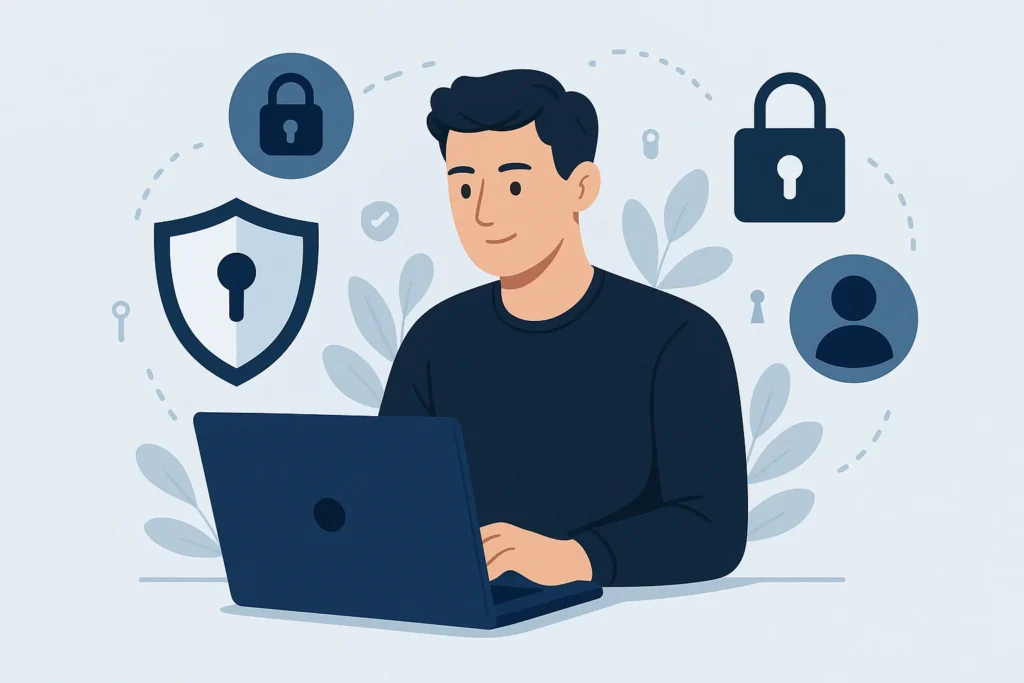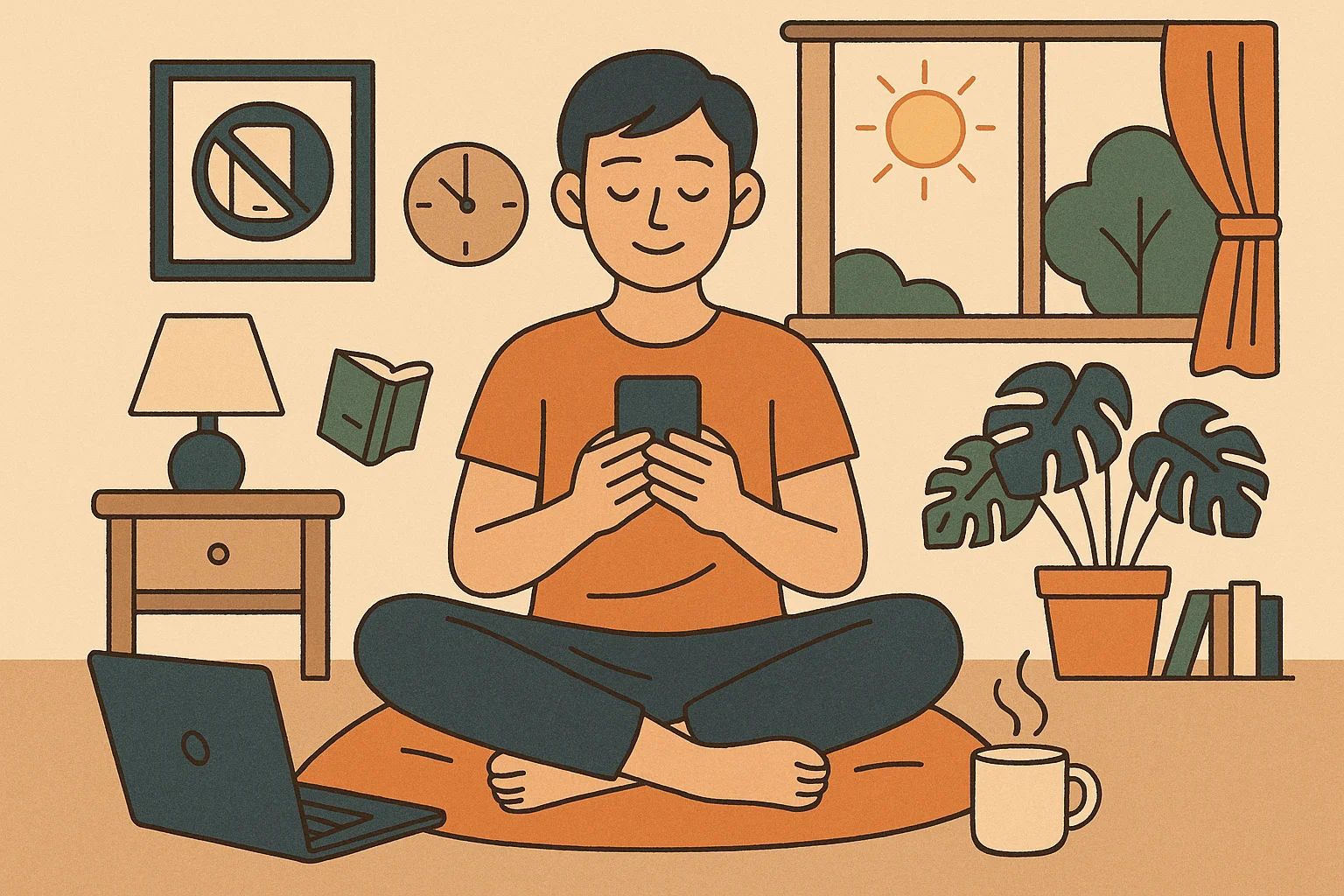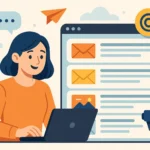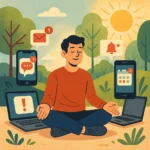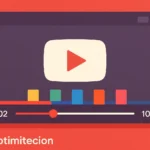Now Reading: 7 Practical Digital Minimalism Tips for Beginners
-
01
7 Practical Digital Minimalism Tips for Beginners
7 Practical Digital Minimalism Tips for Beginners

The average person spends over 4 hours on their phone daily, often without even realizing it. I was shocked when I first tracked my own screen time. If you’re feeling digitally overwhelmed, you’re not alone. Digital minimalism offers a path forward, and I’m excited to share these digital minimalism tips for beginners that can help you reclaim your attention and mental clarity.
Key Takeaways
- Digital minimalism is about intentionally using technology that adds value while eliminating digital distractions
- Start with a digital audit to understand your current tech usage patterns
- Declutter your digital spaces by deleting unused apps and organizing what remains
- Create boundaries by turning off non-essential notifications and establishing tech-free times
- Replace mindless scrolling with meaningful offline activities
- Use focus tools to help maintain your digital minimalism practice
- Be patient as you develop new habits-digital minimalism is a journey, not an overnight transformation
Benefits Of Digital Minimalism
Digital minimalism isn’t about rejecting technology entirely. Rather, it’s a thoughtful approach to using digital tools in ways that support your values and goals while minimizing their negative impacts on your life. Coined by Cal Newport in his book “Digital Minimalism,” this philosophy encourages us to be more intentional about our relationship with technology.
Before diving into practical tips, let’s explore why digital minimalism is worth pursuing:
Greater Mental Clarity
By cutting back on non-essential digital engagement, I’ve created room for solitude, self-reflection, and creativity. With fewer distractions, my mind is free to wander, solve problems, and generate new ideas.
Improved Focus And Productivity
Limiting digital activities to those that truly matter has helped me reclaim my attention for deep, meaningful work. I can now concentrate better on complex tasks, achieve my goals, and enjoy a sense of accomplishment.
Better Work-Life Balance
Digital minimalism has helped me set boundaries between work and personal life. By intentionally choosing when and how to engage with technology, I prevent burnout and ensure my downtime is genuinely restorative.
Enhanced Wellbeing And Lower Stress
Constant notifications, endless scrolling, and information overload led to anxiety and fatigue in my life. Digital minimalism has reduced these stressors, allowing me to feel more present, calm, and in control.
Stronger Relationships
Being less tethered to my devices has given me more time and attention to devote to the people around me, leading to deeper, more meaningful connections with family and friends.
Reduced Costs And Digital Clutter
Using fewer apps and devices has saved me money and helped me avoid the chaos of digital clutter. My digital environment is now simpler, easier to manage, and more enjoyable to use.
Now, let’s dive into practical digital minimalism tips for beginners that you can start implementing today:
Useful Articles:
Conduct A Digital Audit
The first step in your digital minimalism journey is understanding your current relationship with technology:
Track Your Screen Time
Most smartphones have built-in tools to track usage (Screen Time for iOS, Digital Wellbeing for Android). I was shocked to discover I was spending nearly 5 hours daily on my phone! Seeing the numbers made me realize something needed to change.
Identify Digital Pain Points
Notice which apps consume most of your time and attention. Which digital activities leave you feeling drained rather than energized? For me, social media was the biggest culprit, especially mindless scrolling before bed.
Evaluate Each Digital Tool
List all the digital tools you currently use and ask: Does this add real value to my life? Is it essential for work or personal needs? Could I live without it? Be honest with yourself-I found I was holding onto many apps “just in case” I needed them someday.
Declutter Your Digital Spaces
Once you’ve assessed your digital landscape, it’s time to clean house:
Delete Unused Apps
Remove apps you haven’t used in the past month. I deleted over 30 apps during my first digital declutter and haven’t missed a single one. Be especially ruthless with “just-in-case” apps-you can always reinstall them if truly needed.
Organize Your Home Screen
Keep only essential apps on your home screen. I limited mine to phone, messages, calendar, and maps. This simple change reduced my impulsive app checking significantly.
Clean Up Your Computer
Organize desktop files into folders, delete unnecessary documents, and empty your downloads folder. I set aside an hour each month for digital maintenance, which keeps my computer running smoothly and helps me find what I need quickly.
Unsubscribe From Email Newsletters
Take a few minutes to unsubscribe from newsletters and promotional emails you never read. The two seconds it takes to unsubscribe now will save you tons of time deleting later. I went from 50+ emails daily to under 10 by being ruthless with unsubscribing.
Organize Your Bookmarks
Create folders for your browser bookmarks based on categories like “Work,” “Personal,” and “Entertainment.” Delete bookmarks for sites you no longer visit. This simple organization system has made my online research much more efficient.
Useful Articles:
Establish Digital Boundaries
Creating clear boundaries around technology use is essential for digital minimalism:
Turn Off Non-Essential Notifications
Disable notifications for all apps except those that are truly time-sensitive (like messages and phone calls). I was amazed at how much mental space this freed up-no more constant interruptions breaking my concentration.
Create Tech-Free Zones
Designate certain areas in your home as technology-free. I made my bedroom a no-phone zone, which has improved my sleep quality dramatically. Consider other spaces like the dining table or living room for tech-free family time.
Implement Digital Curfews
Set a specific time each evening when you stop using digital devices. I power down all screens at least one hour before bedtime, which has helped me fall asleep faster and wake up more refreshed.
Use Airplane Mode Strategically
When you need to focus, switch your phone to airplane mode. I do this during important work tasks, meals with others, and personal reflection time. It’s a simple way to create uninterrupted space in your day.
Schedule Specific Times For Digital Activities
Instead of checking email or social media whenever the urge strikes, designate specific times for these activities. I check email three times daily and social media once-this boundary has reclaimed hours of my time each week.
Replace Digital Habits With Meaningful Alternatives
Digital minimalism isn’t just about using technology less-it’s about making room for more fulfilling activities:
Rediscover Analog Hobbies
What did you enjoy before smartphones dominated your free time? I’ve returned to reading physical books, hiking, and playing board games with friends. These activities leave me feeling more satisfied than any amount of scrolling.
Embrace Boredom
Resist the urge to reach for your phone whenever you have a free moment. I’ve found that some of my best ideas come during these “bored” moments when my mind can wander freely.
Practice Mindfulness
Use the time you’ve reclaimed from digital distractions for mindfulness practices. Even five minutes of meditation or deep breathing can reset your mental state. I start each morning with a short meditation instead of checking my phone.
Connect In Person
Prioritize face-to-face interactions over digital ones whenever possible. I’ve made it a point to meet friends for coffee instead of just texting, and these conversations are invariably more meaningful and satisfying.
Take Awe Walks
Go for walks without headphones or your phone (if you feel safe to do so). Paying attention to the natural world around you can inspire awe and perspective that digital experiences rarely provide.
Useful Articles:
Leverage Technology Mindfully
Digital minimalism isn’t anti-technology-it’s about using technology purposefully:
Use Focus Tools
Leverage apps and settings designed to help you maintain focus. I use Forest to gamify staying off my phone and Freedom to block distracting websites during work hours. These tools support my intentions when willpower alone isn’t enough.
Curate Your Digital Inputs
Be selective about the content you consume. I’ve unfollowed accounts that don’t inspire or inform me and curated my news sources to avoid information overload. Quality over quantity applies to digital consumption too.
Simplify Your Digital Tools
Look for all-in-one solutions rather than using multiple specialized apps. I consolidated my note-taking, to-do lists, and project management into one platform, which reduced the mental load of switching between systems.
Automate Repetitive Tasks
Use technology to reduce digital busywork. I’ve set up filters for my email, automated bill payments, and created templates for common responses. This frees up mental energy for more important tasks.
Choose Privacy-Respecting Tools
When possible, opt for digital tools that respect your privacy and don’t rely on addictive design patterns. I’ve switched to services like Signal for messaging and Protonmail for email, which align better with my values.
Maintain Your Digital Minimalism Practice
Sustaining digital minimalism requires ongoing attention:
Regular Digital Decluttering
Schedule monthly or quarterly sessions to reassess your digital tools and habits. I set a recurring calendar reminder for the first Sunday of each month to clean up my digital spaces.
Track Your Progress
Monitor how your relationship with technology changes over time. I keep a simple journal noting improvements in my focus, mood, and productivity as I continue my digital minimalism journey.
Find Community Support
Connect with others interested in digital minimalism. I joined an online forum where we share tips and encourage each other through challenges. Having this support makes maintaining new habits much easier.
Practice Self-Compassion
Be patient with yourself when you slip back into old habits. Digital minimalism is a practice, not perfection. I’ve had days of excessive screen time but learned to reset without self-judgment.
Adjust As Needed
Your digital needs may change over time, and that’s okay. I regularly reassess my approach based on current work demands and personal circumstances. Flexibility is key to sustainable digital minimalism.
Digital Minimalism For Specific Contexts
Different areas of life may require tailored approaches to digital minimalism:
Digital Minimalism At Work
- Use time-blocking techniques to designate specific periods for email and messaging
- Create a distraction-free workspace by closing unnecessary tabs and applications
- Communicate your availability to colleagues to manage expectations about response times
Digital Minimalism For Families
- Establish family media agreements with clear guidelines for device usage
- Create tech-free family activities like game nights or outdoor adventures
- Model healthy technology habits for children by being mindful of your own usage
Digital Minimalism For Students
- Use website blockers during study sessions to maintain focus
- Take handwritten notes instead of typing when possible
- Create separate user profiles or accounts for schoolwork versus personal use
Digital Minimalism For Social Media
- Unfollow accounts that don’t bring you joy or value
- Use browser extensions to remove distracting elements from social platforms
- Consider accessing social media only through a browser rather than apps to reduce impulsive checking
Common Challenges And Solutions
As you implement these digital minimalism tips for beginners, you may encounter some obstacles:
FOMO (Fear Of Missing Out)
Challenge: Worrying you’ll miss important news or social connections.
Solution: I schedule brief check-ins for essential platforms and remind myself that truly important news will reach me through multiple channels.
Work Expectations
Challenge: Feeling pressured to be always available for work communications.
Solution: I’ve clearly communicated my working hours and response times to colleagues and set up an emergency contact method for truly urgent matters.
Social Pressure
Challenge: Friends or family who don’t understand your new digital boundaries.
Solution: I explain my reasons for digital minimalism in terms of personal wellbeing rather than judgment of others’ habits, and suggest alternative ways to stay connected.
Habit Relapse
Challenge: Slipping back into old digital habits during stressful times.
Solution: I view setbacks as learning opportunities rather than failures and keep my digital minimalism goals visible as daily reminders.
Digital minimalism isn’t about depriving yourself of technology’s benefits-it’s about creating a more intentional relationship with digital tools. By implementing these digital minimalism tips for beginners, you can reduce digital clutter, enhance your focus, and make space for what truly matters in your life. Remember that digital minimalism is a journey, not a destination. Start small, be patient with yourself, and enjoy the growing sense of freedom and control as you master your digital life.
Useful Articles:



